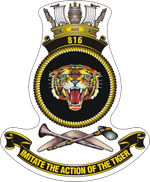
The Sikorsky SH-60/MH-60 Seahawk is a twin turboshaft engine, multi-mission United States Navy helicopter based on the United States Army UH-60 Black Hawk and a member of the Sikorsky S-70 family. The most significant modifications are the folding main rotor blades and a hinged tail to reduce its footprint aboard ships.
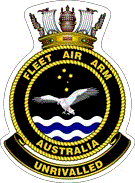
The Fleet Air Arm (FAA), known formerly as the Australian Navy Aviation Group, is the division of the Royal Australian Navy (RAN) responsible for the operation of aircraft. The FAA was founded in 1947 following the purchase of two aircraft carriers from the Royal Navy. FAA personnel fought in the Korean War and the Vietnam War, and participated in later conflicts and operations from host warships.

The Light Airborne Multi-Purpose System (LAMPS) is the United States Navy's program that develops crewed helicopters to assist the surface fleet in anti-submarine warfare.
816 Naval Air Squadron was a Royal Navy Fleet Air Arm carrier based squadron formed at the start of the Second World War.

Helicopter Maritime Strike Squadron Five One (HSM-51), also known as "Warlords," is a United States Navy helicopter squadron stationed at Naval Air Facility Atsugi, located in Ayase City, Kanagawa Prefecture, Honshu, Japan. HSM-51 is part of the Helicopter Maritime Strike Wing, Pacific Fleet, which consists of seven squadrons based in San Diego. The squadron regularly deploys on various ships within the U.S. Navy's Seventh Fleet, primarily stationed in Yokosuka, Japan.

815 Naval Air Squadron is a Royal Navy Fleet Air Arm squadron flying the AgustaWestland Wildcat HMA.2 helicopter and is the Navy's front line Wildcat Naval Air Squadron. The squadron is based at RNAS Yeovilton in Somerset. The squadron is capable of carrying out multiple roles such as: counter-narcotics, anti-piracy, Above Surface Warfare (ASuW), search and rescue, disaster relief and flying and engineering training. In the early 2000s, the Navy said that the squadron was largest helicopter squadron in Europe.
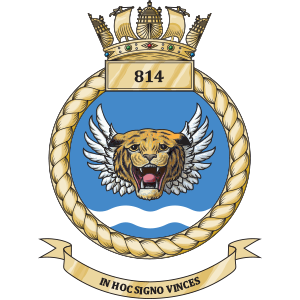
814 Naval Air Squadron or 814 NAS, nicknamed the Flying Tigers, is a squadron of the Royal Navy Fleet Air Arm. It is currently equipped with the AgustaWestland Merlin HM2 anti-submarine warfare helicopter and is based at Royal Naval Air Station (RNAS) Culdrose in Cornwall. The squadron was formed in December 1938 and has been disbanded and reformed several times.

725 Squadron is a naval aviation squadron of the Royal Australian Navy (RAN) Fleet Air Arm. The squadron was originally created in August 1943 as part of the Fleet Air Arm of the Royal Navy. It initially served as a fleet requirements unit, was rerolled in August 1945 as a target towing unit, then was disbanded in December 1945. In January 1958, the squadron was re-formed, as a fleet requirements and communications unit of the RAN, operating a variety of fixed-wing aircraft. The squadron was redesignated as an anti-submarine warfare training squadron in May 1959, then was decommissioned in May 1961 and absorbed into 724 Squadron. 725 Squadron was recommissioned in November 1962 as an operational anti-submarine helicopter squadron, flying the Westland Wessex. During this commission, the squadron was involved in HMAS Sydney's troop transport voyages, the rescue of personnel following the Melbourne-Voyager collision, and the Operation Navy Help Darwin relief effort post-Cyclone Tracy. The squadron was decommissioned in December 1975. 725 Squadron was commissioned for the fourth time in June 2015, this time as a training unit for MH-60R Seahawk Romeo helicopters: the squadron had been reactivated two years prior as a non-commissioned unit train on and accept into service the Romeos.
724 Squadron was a Royal Navy Fleet Air Arm and Royal Australian Navy Fleet Air Arm flying squadron. The squadron was formed for the first time in 1945 and was last disbanded in 1984.

824 Naval Air Squadron is a Royal Navy Fleet Air Arm squadron based at RNAS Culdrose and currently operating the AgustaWestland Merlin HM2 Operational Conversion Unit. It trains aircrew in Anti-Submarine warfare and Airborne Surveillance and Control.
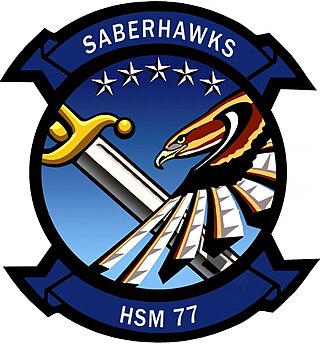
Helicopter Maritime Strike Squadron Seven Seven (HSM-77) "Saberhawks" is a United States Navy helicopter squadron based at Naval Air Facility, Atsugi, Japan. HSM-77 is attached to Carrier Air Wing Five and deploys aboard USS Ronald Reagan and air capable ships attached to Carrier Strike Group Five (CSG-5). The squadron was established as Helicopter Antisubmarine Squadron (Light) Forty Seven (HSL-47) on 25 September 1987 and was redesignated HSM-77 on 2 Apr 2009.

The Australian Fleet Air Arm Museum, formerly known as Australia's Museum of Flight, is a military aerospace museum located at the naval air station HMAS Albatross, near Nowra, New South Wales. The museum was opened in 1990, although efforts to preserve artifacts related to Australia's naval aviation history began in 1974. The museum houses aircraft used throughout the history of the Fleet Air Arm, the naval aviation branch of the Royal Australian Navy (RAN), along with other aircraft of relevance to Australia's aviation history, and memorabilia relating to Australian aircraft carriers. The museum includes 34 aircraft and helicopters in its collection. It is open to the public daily, except for major public holidays. The museum building is also home to Albatross Aero Club.

The first involvement Australia had with naval aviation was in 1911, when an Australian-born Royal Navy officer became one of the first four naval officers to receive pilot qualifications. During World War I, the Royal Australian Navy (RAN) experienced several forms of airborne operation, with HMAS Brisbane operating a seaplane, while HMA Ships Sydney and Australia were used for experiments with aircraft launch platforms. An aircraft embarked aboard Sydney was also involved in one of the first naval air battles. Several Australians also flew as part of the Royal Naval Air Service.

737 Naval Air Squadron was a Naval Air Squadron of the Royal Navy's Fleet Air Arm. It was initially active during 1943 as an amphibious Bomber Reconnaissance Training Squadron. Reactivated in 1944 it operated as an ASV Training Unit until 1945. It was active again between 1949 and 1957. From 1959 it was the Anti-Submarine Warfare school at RNAS Portland. It operated Westland Wessex HAS.3 rescue helicopters from their land base at RNAS Portland, Dorset.

Helicopter Maritime Strike Squadron 49 (HSM-49) is a United States Navy Maritime Strike helicopter squadron based Naval Air Station North Island, California.

744 Naval Air Squadron is a Naval Air Squadron of the Royal Navy's Fleet Air Arm. It was initially active in 1943, based in Nova Scotia. A second 744 NAS was formed, in early 1944, in Northern Ireland, for Merchant Aircraft Carrier training, meaning the first iteration was re-designated 754 NAS. The squadron's primary focus turned to Anti-submarine warfare training, which then further developed into trialing new submarine detection technology, ending in 1956. In 2018 it reformed as the Mission Systems and Armament Test and Evaluation Squadron.

The Royal Australian Navy operated Grumman S-2 Tracker anti-submarine warfare aircraft from 1967 to 1984. The type flew from the aircraft carrier HMAS Melbourne and shore bases. A total of 32 Trackers were purchased in two batches which were delivered in 1967 and 1977.
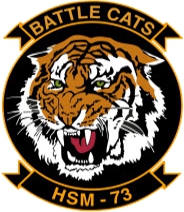
Helicopter Maritime Strike Squadron 73 (HSM-73) is a United States Navy Maritime Strike helicopter squadron based on Naval Air Station North Island, California.
The INAS 334 is a helicopter squadron of the Indian Navy operating Sikorsky MH-60R SeaHawk helicopters since 6 March 2024. The squadron is be based at INS Garuda in Kochi and is expected to have fleet deployments onboard the Aircraft Carrier INS Vikrant.
